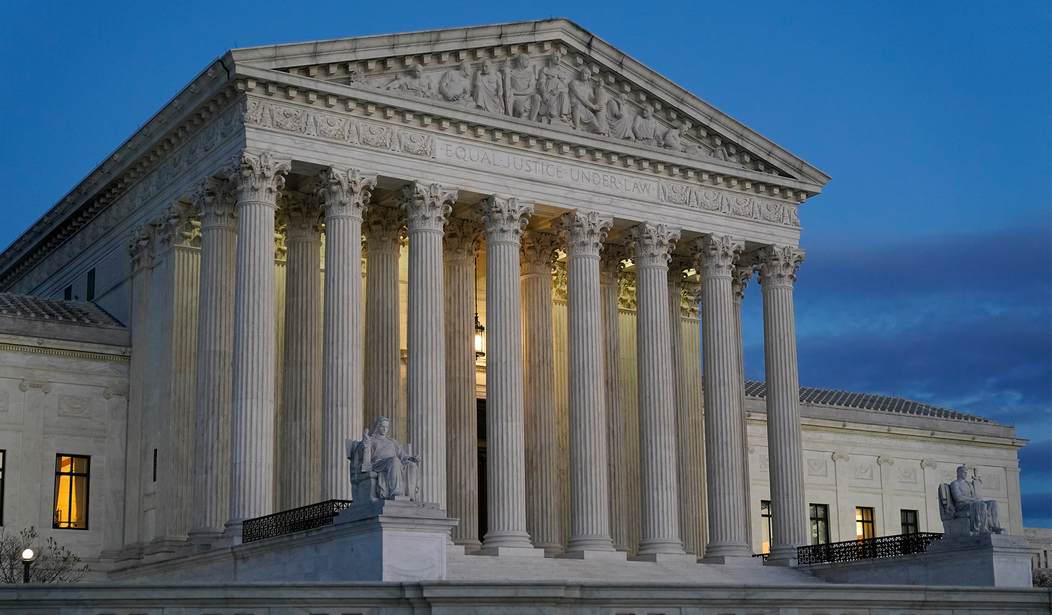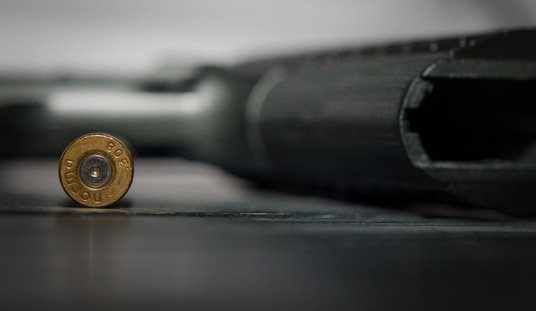The Supreme Court is going to keep gun owners and the DOJ in suspense for a few more days in regard to the ATF’s rule on unfinished frames and receivers. Late Friday afternoon Justice Samuel Alito issued a brief order extending his administrative stay of the Fifth Circuit’s partial vacatur of the rule until 5 p.m. Eastern next Tuesday, August 8th.
Welp. https://t.co/EUHIjffKZb
— Stephen Gutowski (@StephenGutowski) August 4, 2023
Yeah, that about sums it up.
Is there anything we can glean from Alito’s brief order? Probably not, but LawDorkNews’s Chris Geidner has a theory.
This kick-the-can-down-the-road order means that someone is likely writing, but as with today's Tulsa order, note that the weird posture of these can sometimes lead to "statements" that aren't technically dissents.
— Chris Geidner (@chrisgeidner) August 4, 2023
If Geidner’s correct then that would mean that Alito has referred the case to the full Court for review rather than deciding the emergency appeal himself. Then the question becomes who, exactly, would be writing a possible dissent or “statement” to be released along with the Court’s order on whether or not to allow the Fifth Circuit’s vacatur to stand while the underlying challenge to the agency’s rule proceeds to trial.
Trying to guess that is an exercise in pure speculation, and I won’t even hazard a guess. I think it is worth pointing out, however, that while Vanderstok v. Garland certainly implicates our right to keep and bear arms, the legal arguments presented by the plaintiffs are not based on the Heller or Bruen decisions. Instead, the plaintiffs argue that the ATF overstepped its executive branch authority in promulgating what amounts to legislation, not a tweak to existing regulation, by upending decades of previous guidance that stated unfinished frames and receivers were not considered “firearms” as defined by the Gun Control Act of 1968.
The Firearms Policy Coalition offered a secondary argument in its brief to Alito as well; that the district court’s interpretation of the ATF rule is supported by the doctrine of constitutional avoidance and the rule of lenity. In that argument, the Second Amendment does come into play.
To the extent there could be any uncertainty, the doctrine of constitutional avoidance and the rule of lenity further bolster the district court’s interpretation. The district court’s interpretation avoids at least two significant constitutional problems raised by the Rule. And “[w]hen the validity of an act of the Congress is drawn in question, and even if a serious doubt of constitutionality is raised, it is a cardinal principle that this Court will first ascertain whether a construction of the statute is fairly possible by which the question may be avoided.” Crowell v. Benson, 285 U.S. 22, 62 (1932). The district court’s interpretation also properly resolves ambiguity, to the extent it exists, against the Government.
First, the Gun Control Act, as applied through the Rule, creates a substantial question under the Second Amendment to the United States Constitution. The Second Amendment, which protects “the right of the people to keep and bear Arms,” also protects, by necessary implication, the right to acquire arms , see Luis v. United States, 578 U.S. 5, 26–27 (2016) (Thomas, J., concurring); see also Rigby v. Jennings, 630 F. Supp. 3d 602, 615 (D. Del. 2022). One way of acquiring arms is by making them; indeed, self-manufacture of firearms is an historically common way to acquire them. Supra Greenlee, 54 ST. MARY’S L.J. at 45–70.
And although certain restrictions on Second Amendment protected activity are acceptable if they can be shown to be “consistent with this Nation’s historical tradition of firearm regulation,” New York State Rifle & Pistol Ass’n, Inc. v. Bruen, 142 S. Ct. 2111, 2126 (2022), there is no historical tradition of regulating privately made firearms, supra Greenlee, 54 ST. MARY’S L.J. at 78 (“All such restrictions [on the manufacture of arms for personal use] have been enacted within the last decade.”). Instead, Congress has focused (as in the Gun Control Act) on regulating the commercial sale of firearms. The Rule breaks with this history and raises serious Second Amendment concerns that the district court’s interpretation of the Act avoids.
Second, the district court’s interpretation mitigates vagueness concerns with the Gun Control Act. The Act is a criminal statute, and “[t]he prohibition on vagueness in criminal statutes . . . is an essential of due process, required by both ordinary notions of fair play and the settled rules of law.” Sessions v. Dimaya, 138 S. Ct. 1204, 1212 (2018) (quotations omitted). The Rule threatens to render the Act unconstitutionally vague by making it unclear when an item that with some work could become a frame or receiver crosses the line to become a “frame or receiver” or when a “weapons parts kit” is sufficiently complete to be a “firearm.” For example, under the Rule an item may be regulated as a frame or receiver when it is in a state such that it “may readily be completed” to function as a frame or receiver. 27 C.F.R. § 478.12(c). “Readily” is, in turn, determined by reference to eight factors, which are not weighted, and include things like an evaluation of “parts availability” and “feasibility” of completing the manufacturing process. 27 C.F.R. § 479.11. The face of the regulation fails to provide clear guidance to law-abiding citizens about which items are or are not firearms under the Act.
The inclusion of “weapon parts kit[s]” within the definition of “firearm” creates similar problems. Such items are regulated when they are “designed to or may readily be completed” to become a firearm, 27 C.F.R. § 478.11, and in determining whether an item fits this definition, ATF may consider “any associated templates, jigs, molds, equipment, or tools that are made available by the seller” as well as “any instructions, guides, or marketing materials.” 27 C.F.R. § 479.102. In other words, whether an item or parts kit is a “firearm” and therefore regulated under the Gun Control Act depends in part on the “marketing materials” and “tools” with which it is packaged and the same parts, sold in different contexts, may be regulated in some but not regulated in others. Such a regulation, with criminal consequences, essentially creates a trap for the unwary.
Third, while the district court’s interpretation of the statute is straightforwardly the best interpretation, even if that were not the case the statute would be at best ambiguous. Because the Gun Control Act is a criminal statute, the rule of lenity counsels that any such ambiguity must be resolved against the Government. See United States v. Thompson/Ctr. Arms Co., 504 U.S. 505, 518 (1992).
We’ve seen the Supreme Court recently take issue with regulatory overreach in cases like West Virginia v. EPA and Sackett v. EPA, but this is the first real test of how SCOTUS will view the ATF overreach that’s gone into overdrive since Joe Biden was sworn in. The ATF’s ban on bump stocks was a byproduct of the Trump White House, but Biden’s abused his authority even more with the ATF’s attempt to re-define firearms to include something that could, with work, become one and its decision to essentially classify brace-equipped pistols as short-barreled rifles. All three of those ATF rules have been rejected by various lower courts around the country, but SCOTUS has been able to side step the issue until now… or rather, until next Tuesday afternoon.









Join the conversation as a VIP Member